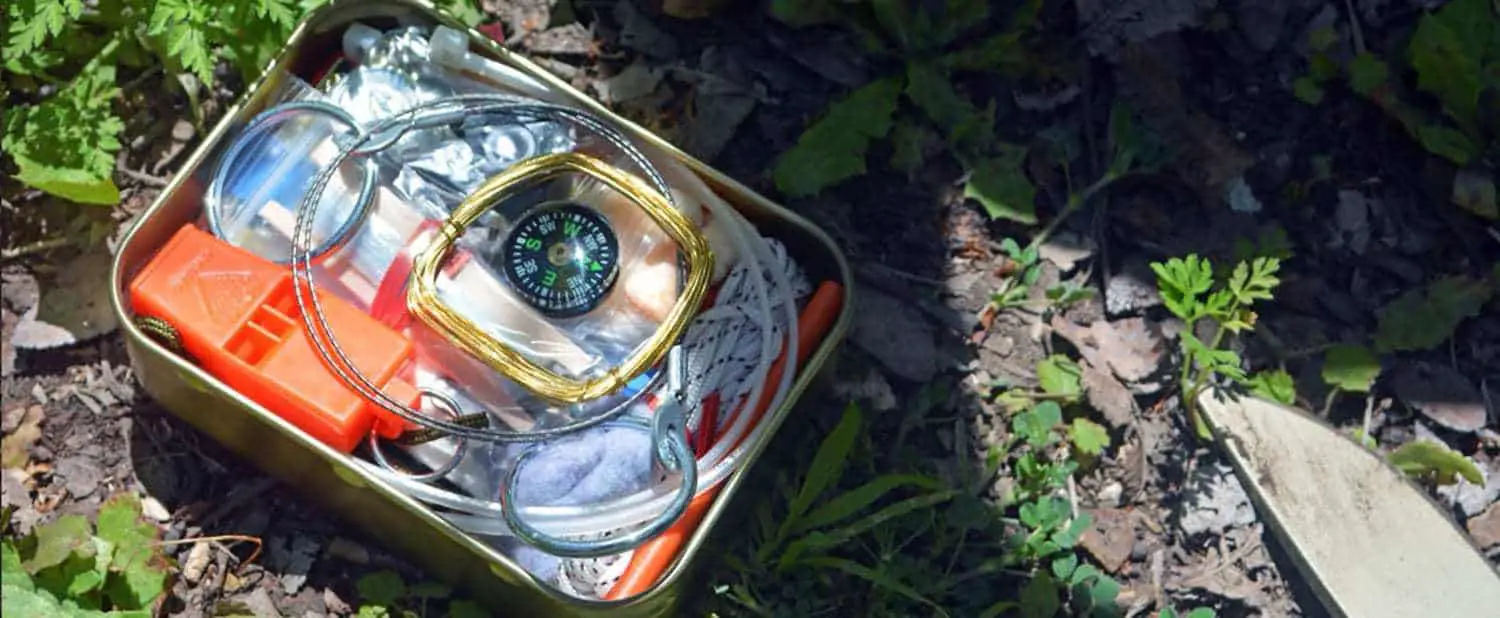It’s a scenario you can easily find yourself in, whether you are an adventurer, outdoorsman, hunter or just enjoy spending time outside. Bad weather sets in, you get lost or an injury occurs and you are suddenly facing survival in an unforgiving environment.
The founders of Best Glide ASE (Adventure Survival Equipment) started their company with the explicit goal of offering dependable survival equipment that is lightweight and easy to carry with you.
Survival gear is only good if you have it and their Pocket Survival Tin was designed with this in mind. It’s small enough to keep with you at all times.
One of the many components of their Survival Tin is a small fishing kit (a stripped-down version of their more complete Best Glide ASE Emergency Survival Fishing Kit) which in a survival situation, gives you the minimum gear needed to catch fish.
We decided to put the fishing kit to the test and see if we could provide something for a meal. It was a beautiful Spring day and we were at a local state park.
These “safe” conditions are great opportunities to test your gear so that when you ARE in a stressful survival situation, you can approach it with confidence.
Get your gear together

Fishing gear included in the Pocket Survival Tin:
- Line: 50 feet,12 LB
- Hooks: (2) #4, (2) #6, (2) #8
- Split shot: (3) BB, (3) 3/0
- Bait: White soft plastic fishing bait
This was a mild Spring day in a climate that we’re very used to and have lots of experience in. If you are planning a trip in winter, you may need to change up the fishing gear in your survival kit to ensure you have adequate line and bait options.
Cold winter conditions will make some types of lines, like monofilament and fluorocarbon, difficult to manage.
Adding a small amount of line conditioner will keep the line workable and help prevent your line from twisting. If you’re dealing with thick ice, make sure you have the tools to cut through ice.
Will you be in a desert environment? Maybe in a very wet, jungle-type environment? Or, next to the ocean?
Don’t rely on fishing for food in a survival situation if you haven’t done your homework and have come prepared for the very different approaches you may have to take depending on the environment that you are in.
Gather bait
Before you go, make sure you’re familiar with the types of fish available in the area and know possible bait options.
Here in Texas, we know that bass, catfish, and perch are common in most lakes and ponds.
Perch are small but plentiful and much easier to catch, so we specifically targeted them because they can be quickly caught from the shoreline.
Searching for grubs and worms, found under downed and rotted trees, is an easy way to find bait.

We quickly found a small worm, which would work perfectly for perch.

Live bait is many times the best option because you can have seemingly unlimited amounts of it, but have a backup of artificial bait. Hard baits like spinners, crankbaits, and spoons can be a good choice for artificial bait on warmer days and in warmer climates.
In winter and in colder climates, live bait reacts to the colder temperatures more naturally, as animals and fish just move more slowly. If you work an artificial bait too much, you won’t be successful in catching fish.
To prepare for a situation where you may not have access to live bait, update your survival kit with artificial bait specifically for colder weather.
Use bait made with hair and feathers so they won’t become rigid like plastic bait will. Hair and feathers move with the current, which looks much more natural.
Doing your research ahead of time, asking locals or in online fishing forums, can be the difference between success and failure.
Give it a go

Starting out in mid-afternoon, we didn’t have much success.

We switched out the bait for another worm that was found and we moved to the edge of the larger lake and finally caught our first perch.
Tiny? Yes. But, it’s food.

Here in Texas, we lump several species of fish in our rivers and lakes and label them “perch.”
They are not the same as a true perch that you’ll find in northern, colder climates, but are actually part of the sunfish family of fish.
Names like Longear Sunfish, Redear Sunfish, Bluegill, Green Sunfish, Redbreast Sunfish, and Warmouth get thrown together and called perch.

By the end of our test, we had caught 8, which is enough to make a meal.
We used the default fishing gear in the Pocket Survival Tin and learned we needed to update it with some artificial lures and bait, specific for Texas fishing.
We also thought about how we make it more modular since we have a trip planned next month for Washington State, which will still be under colder Spring temperatures. That means that we’ll need a bit of different gear in our kit.
The key to any survival situation is having the right gear and knowing how to use that gear. A fishing kit sounds simple until you’re in an emergency situation and NEED to catch food in order to survive. Making sure you’re familiar with your gear, the fish you are trying to catch, and the terrain you’re in can be the difference between life and death.
Have you ever tested your emergency fishing gear? What else are we missing?

